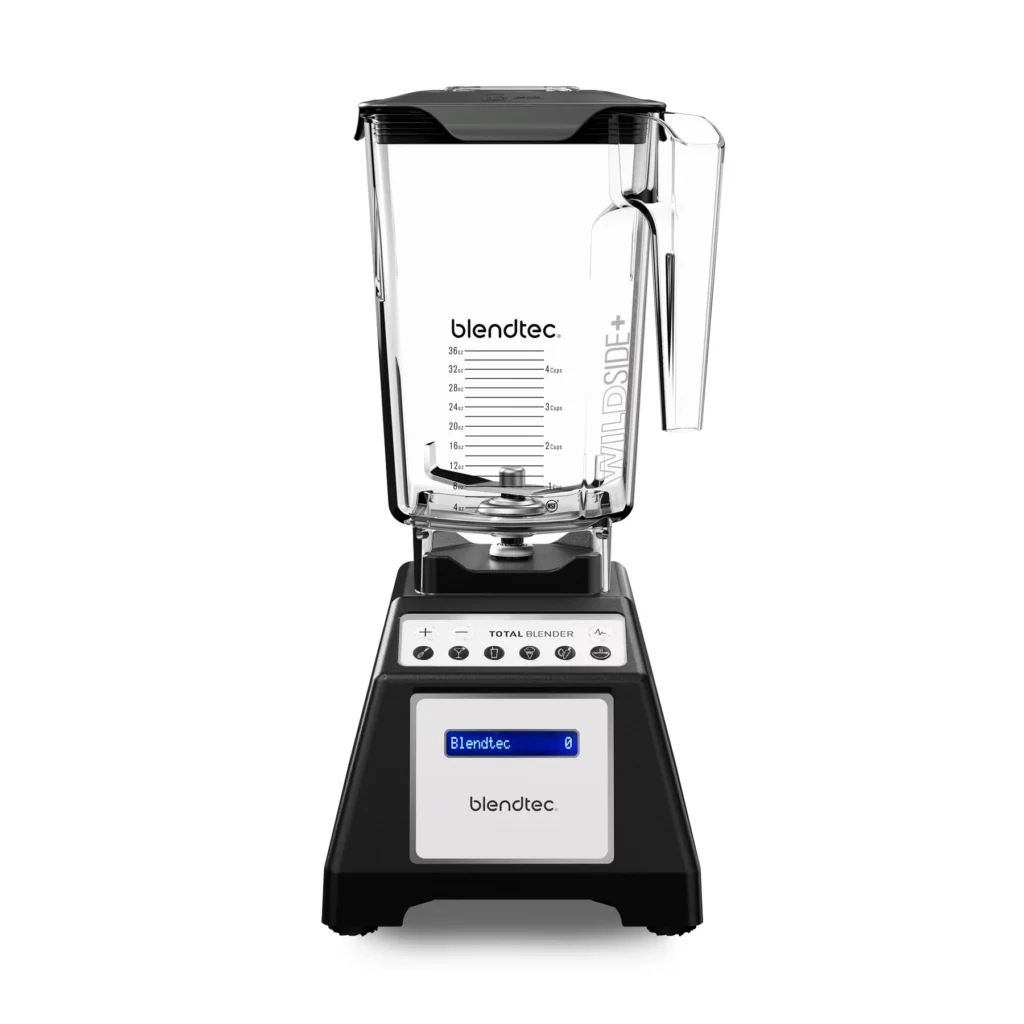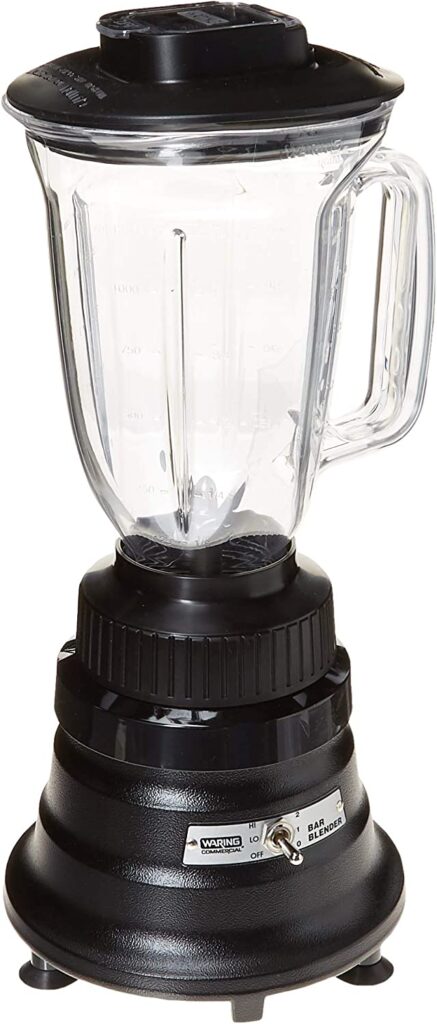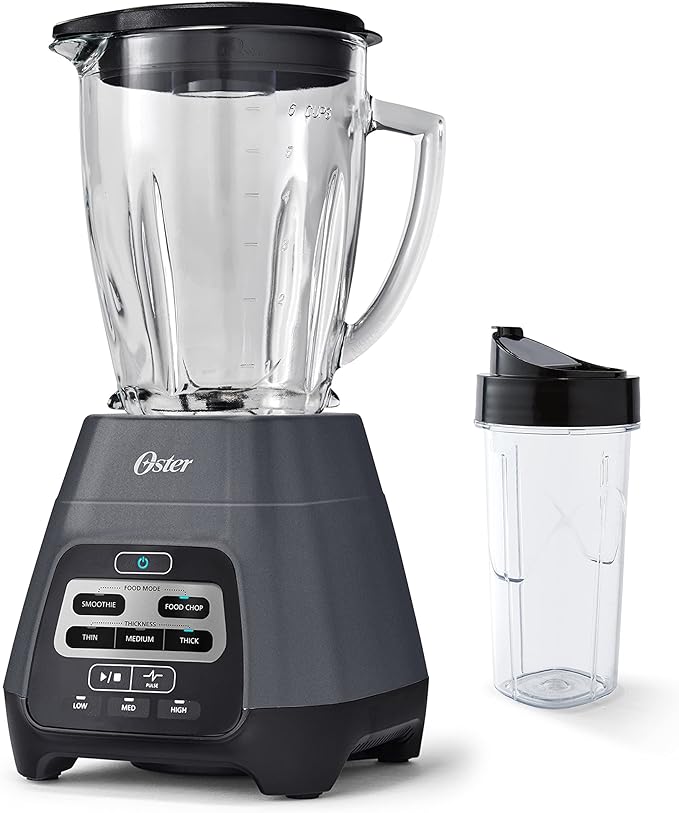Originally posted on 12/5/22. Last updated 4/18/24 with new and surprising low-cost options from Oster and Hamilton Beach.
History of the Blender
As with so many other kitchen appliances, the history of the blender is a storied one that’s tied to the history of the United States itself in the period following the Second Industrial Revolution when America was the leader in innovation and invention.
Industrial drink mixers had of course been used in soda shops, ice cream parlors, and soda fountains at the start of the 20th century. The first patent went to Stephen Poplawski of Wisconsin. Frederick J. Osius took Poplawski’s design, improved it, and started to produce it under the brand name Hamilton Beach Company, a company Osius founded but eventually named after two of his employees, Louis Hamilton and Chester Beach. He patented his own design and brought it to brought it to Fred Waring for investment. Fred Waring was sort of like the Taylor Swift of his day–he and his band topped the pop charts with such hits as “Smoke Gets In Your Eyes” and “Button Up Your Overcoat”. That made him very, very wealthy.
The Waring Company invested $25,000 in Osius’s patent and sold The Miracle Mixer, later renamed The Waring Blendor. By 1954, one million were sold.
As has happened in so many industries, once China was given most favored nation status, brands tripped over themselves to get access to the artificially cheap labor and the promise of a 1.4 billion people market. Of course, the result of that was a lot of rich politicians and corporate executives, the decimation of manufacturing jobs in the US, and the wholesale theft of intellectual property that manufacturers were foolish enough to send over.



Are any Blenders not made in China?
Happily, yes. Ironically, the offshoring of cheaper brands to China and the resulting cheapening of the brands of consumer products brought more attention to more expensive brands. After all, why buy a $100 blender that will break every year, when you can buy a $400 blender that lasts 20 years?
As of my update in 2024, it looks like some of the cheapest brands are starting to diversify outside of China and into countries like Indonesia where labor is almost certainly cheaper. I added options from Oster and Hamilton Beach below—brands that would never, ever have shown up in 2022 when I first wrote this article.
1. Vitamix Blenders
Vitamix has a long and storied history in the US. The company started in 1921 as a natural food business. In 1937, the first Vita-Mix blender was created. Vita-Mix remained relatively obscure until the 1990’s, when the perfect storm hit: the “healthy smoothies” diet crazy hit, the Internet took off, and most of Vitamix’s traditional competitors like Hamilton Beach and Oster raced to build their product in China, resulting in a complete collapse of their brand as their quality plummeted and their intellectual property was stolen. Vitamix, on the other hand, kept things in the US even if it meant keeping their price at a premium, knowing that people would pay for quality when it came to their health.
Vitamix not only makes the best blenders you can buy, they’re all built and tested out of their plant in Cleveland, Ohio. As with most kitchen appliance companies, some components are make in China, something that’s unfortunately unavoidable these days.
My wife and I have owned a Vitamix for years. It is indestructible. We’ve crushed ice, made smoothies, ice cream, cake batter, drinks, grains, coffee, dips, baby food, soup, you name it. Today, the blender is still good as new, both the motor and the blades.
There are many choices. Here’s how to go about choosing.
Vitamix Ascent Series – This is Vitamix’s newest line of blenders, featuring the ability to mix and match containers and accessories, similar to how KitchenAid stand mixers allow you a tremendous amount of versatility. One Vitamix blender can serve as a blender, a food processor, a grain mill, and more. The cream of the crop is the A3500, which you can get at Amazon or directly from Vitamix for around $649.95. For more affordable choices, the A2300 is also highly rated.
Vitamix Explorian Series – The Explorian blender has Vitamix’s renowned power and durability, but comes at a more affordable price and a 5-year warranty. You can get it at Amazon or directly from Vitamix.
Vitamix Legacy Series – I would liken the Legacy Series to Classic Coke. Vitamix is clearly desperate to introduce new product lines, but customers stubbornly cling to the old models that work so well. Of these models, the Vitamix Professional Series 750 blender and the Vitamix 5200 Blender.
The one gripe I have about Vitamix is that as the years go by, they’re getting more and more vague about their language–10 years ago they proudly shouted “made in the USA” on all their communications, but these days I had to dig to find any reference of this on their Web site or their Amazon listings. It’s likely due to the amount of foreign components they use. But as long as the final assembly is done in the USA, we know that all of their money isn’t going to China.
2. Blendtec Blenders
Blendtec, on the other hand, doesn’t mince words. Their Web site clearly states that “We engineer, design, and assemble our blenders in Orem, Utah, with components either manufactured in-house or sourced primarily from the USA”. Their FAQ provides some clear hints as to why neither they nor Vitamix boldly states “Made in the USA” anymore–evidently legally they’re not allowed to as long as they use foreign components in their product. I appreciate Blendtec’s transparency here.
Blendtec, of course, was one of the first brands to take advantage of the new medium of the Internet, with CEO and Chairman of the board Tom Dickson becoming an Internet star by putting everything from iPhones to Amazon Echos to Hillary Clinton’s emails into the blender and asking the magical question, “Will It Blend”. These videos single-handedly catapulted Blendtec from an obscure brand to one of the biggest blender brands in the US. It was a brilliant way to entertain audiences while showing off the power and durability of their blenders.
Commercial Blendtec blenders are in use in all kinds of restaurants like Panera Bread, Cinnabon, Dunkin Donuts, Baskin Robbins, and Jamba Juice.
Today, you can buy Blendtec blenders directly from them or from Amazon. Their most popular models are the Blendtec Total Classic Original Blender and the Classic 575 Blender.
3. KitchenAid Blenders
While KitchenAid is most famous for their stand mixers—which are all made in the USA—their blenders are less famous.
Happily, from my research I can see that their most popular model, the KitchenAid K400, is indeed made in the USA out of the same factory that makes their stand mixers. If the durability of the stand mixers is any indication, these blenders will be workhouses that last you for years and years.
4. Waring Blenders
I had to do a double-take when I saw that Waring, the makers of the first blender patented and sold in the United States, was still making their products in the USA. I was even more astounded to hear that Waring still sells a sub-$100 blender for light duty, the Waring Commercial BB155 Countertop Blender, which is also made in the USA.
Waring Commercial also sells higher end models for use, all made in the USA. Waring was purchased by Conair back in 1998, and wisely turned their focus on the higher margin commercial market. It’s come full circle, as now, consumers demand professional-quality equipment. As comparison, the other industry pioneer Hamilton Beach shifted its focus on cheap, mass-produced equipment made in China, and destroyed their brand in the process.
Their absolute top of the line blender is the CB15 model, mainly used in professional settings, as its $1500+ price tag may indicate.
Between the BB155 and the CB15 there’s a whole range of different blenders with different strengths, speeds, and controls. The most popular midrange blender appears to be the BB300, priced under $200. Visit Waring’s site to see their entire range, all made in the USA.
5. Oster Blender for Shakes, Smoothies, and Salsas
I wouldn’t believe my eyes when I saw this Oster blender is now made in Mexico. For years (including when I originally wrote this article) you couldn’t find any sub-$100 blender that wasn’t made in China. How times have changed.
As with many other categories, we can thank the 2018 tariffs and China’s own draconian response to COVID in 2020 for opening a lot of people’s eyes, including evidently the executives at Newell Brands.
If you happen to be shopping at Walmart or Target, you may be able to find even cheaper options that are made in Mexico such as this Easy to Clean blender for under $50.
6. Hamilton Beach Smoothie Maker
Not to be outdone, on a recent shopping trip I came across this $30 blender from Hamilton Beach. And say this on the label.

Again, don’t think for a second that Hamilton Beach Brands Holding Company have somehow developed a conscience—the vast majority of their brands and products are still made in China.
Again, it’s more likely that the 2018 tariffs and China’s response to COVID opened their eyes that the grass is definitely not greener in China (in fact, it’s polluted and slimy).
Let’s hope that this trend continues. As long as it does, I encourage you to buy from them to send a message that you approve of them diversifying their manufacturing.
Do you know of other blenders that have avoided the China trap? Let us know in the comments!







I spoke to Waring directly on their claim of ” made in America “. Over the phone, the rep made it crystal clear that their blenders were assembled in the US from imported parts.
Every single blender on this page uses Chinese parts, with one and only one exception. Blendtec, who do their own injection molding. Haven’t used a Blendtec so I can’t speak to the quality, but it’s literally my job to research where companies source their parts; in the US, or not.
We currently own a blendtec and can attest to their quality.
That is interesting 🙂 Keep it up 🙂